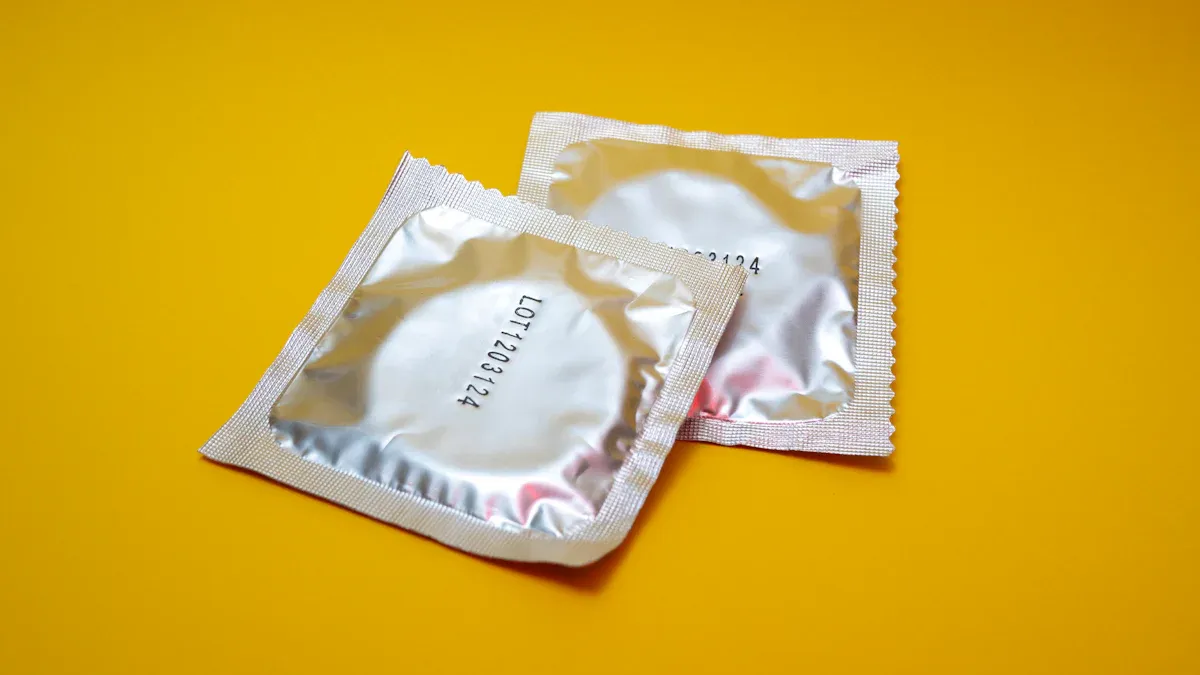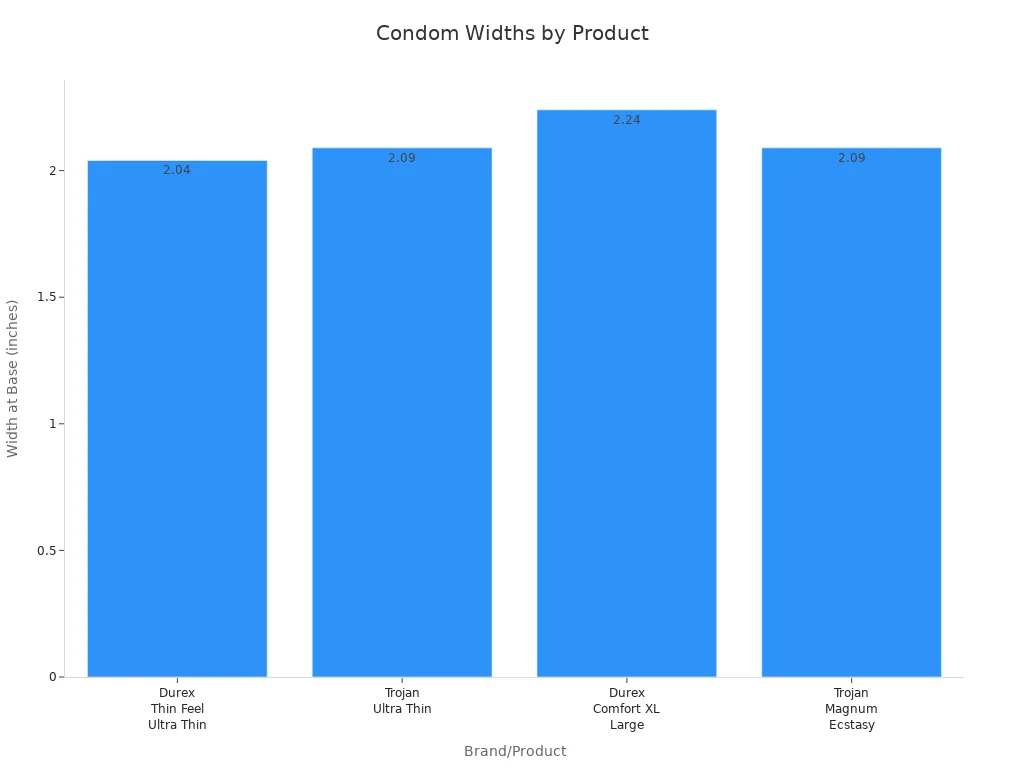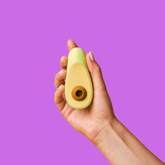How to Choose Condoms and How to Use a Condom Properly

You should choose condoms that fit you well and meet your needs. When you choose condoms, selecting the right size, material, and type is essential to keep you safe and comfortable. Many people encounter problems with condoms because they use the wrong lubricant, rush, or do not practise putting them on properly.
-
Common reasons condoms fail include:
Using petroleum-based lubricants, which can damage latex.
Rushing or using condoms in situations where you cannot concentrate.
Lacking experience with condoms.
Having multiple sexual partners.
If you choose condoms carefully and follow each step with attention, you will be safer and feel more confident every time you use one.
Key Takeaways
Pick condoms that fit your penis girth well. This helps you stay comfortable. It also stops slipping or breaking. Use the right condom material if you have allergies. Try polyurethane or polyisoprene if you cannot use latex. Follow the correct steps to put on and take off condoms. This gives you the best protection. It also helps stop damage. Always use water-based or silicone-based lubricants with latex condoms. Do not use oil-based products. Practise using condoms before sex. This helps you feel more confident. It also helps you make fewer mistakes. This makes sex safer and more fun.
Why the Right Condom Matters
Fit and Comfort
You need a condom that fits you well. This helps you feel comfortable during sex. If a condom is too tight or too loose, it can rub your skin. This might cause irritation or pain. Studies show that a good fit makes condoms more comfortable. It also stops problems like being too short or too tight. The right size means you will not get distracted or uncomfortable. Many men say a bad fit causes irritation and less fun. You should try different sizes and styles to find what works for you.
Tip: If you feel pain, slippage, or breakage, try another size or brand. Clinics often give free samples so you can try them safely.
A condom that fits well is less likely to break or slip. Research shows that the wrong size leads to more problems. If your penis is larger, standard condoms may break more. If a condom is too big, it can slip off. Almost half of men in one study said their condoms did not fit well. This caused more breakage and sexual problems. Fitted condoms break less, especially for men who need bigger sizes.
Protection
Condoms keep you safe from pregnancy and sexually transmitted infections (STIs). They work best when you use the right size and follow the instructions. Using condoms the right way every time gives you the most protection. The table below shows how well condoms work:
Usage Type |
Pregnancy Prevention Effectiveness |
Notes |
|---|---|---|
Perfect Use |
Using condoms correctly every time |
|
Typical Use |
Real-life use including user errors |
|
High |
Condoms are effective at preventing STIs when used correctly and consistently |
If you use the wrong size, condoms can break or slip off. This makes them less safe. Learning and practising help you avoid these problems.
Confidence
A condom that fits well helps you feel confident and calm. Studies show that believing you can use condoms without shame helps you use them more often. If you have trouble with fit or comfort, you might worry about breakage or losing your erection. This can make you feel less sure and enjoy sex less. Research says that well-fitted condoms make sex better and help you feel safe. Couples who use condoms say they feel safer, respect each other more, and regret sex less. This confidence helps you make good choices about sex.
Choose Condoms: Right Condom Size and Fit

When you choose condoms, you need to focus on size and fit. Girth, or the circumference of your penis, matters more than length. A condom that fits well will feel comfortable and protect you better. If you use the wrong size, you may feel discomfort or risk the condom slipping off or breaking.
Measuring Girth
You can measure your girth at home. Use a flexible measuring tape or a piece of string. Wrap it gently around the thickest part of your erect penis, usually at the base or mid-shaft. Do not squeeze too tightly. If you use string, mark where it meets and then measure the length with a ruler. Always measure when fully erect for the most accurate result. You can also measure both the base and the mid-shaft to find the best fit.
Tip: Be honest and careful when you measure. Avoid measuring when flaccid, as this will not give you the right size.
Sizing Guide
Once you know your girth, you can use a size chart to choose condoms that fit you best. Most brands group sizes by girth, not length. The table below shows common size categories and their measurements:
Size Category |
Nominal Width (mm) |
Length (mm) |
|---|---|---|
Small |
49 - 52 |
190 - 195 |
Regular |
52 - 56 |
190 - 195 |
Large |
56 - 60 |
190 - 200 |
Extra-Large |
60 - 64 |
200 - 205 |
Extra-Extra-Large |
64 - 68 |
205 - 230 |
Most people find that standard condoms fit well, but you should always check the actual measurements on the box. Some brands label condoms as "Large" even if they are only slightly bigger than standard. Always compare your girth to the size chart.
You can also use this quick guide:
Penis girth less than 4.7 inches: snug fit condom.
Penis girth between 4.7 and 5.1 inches: regular fit condom.
Penis girth between 5.1 and 6.0 inches: large fit condom.
To find the condom width you need, divide your girth by 3.14. This gives you the flat width, which matches how condoms are measured in stores.
Here is a chart comparing base widths for popular condom products:

Note: Most condoms are long enough for the average penis. Girth is the key factor for comfort and safety.
Signs of Poor Fit
You can spot a poor fit by paying attention to how the condom feels and looks during use. Here are some common signs:
The condom wobbles or moves up and down easily.
The rim squeezes your penis, causing bulging on either side.
Less than half an inch of space remains at the tip to collect semen.
Part of your penis is still visible after unrolling the condom.
You feel pain, discomfort, or reduced sensation.
The condom slips off or bunches up during sex.
The condom breaks or feels like it might burst.
If you notice any of these problems, try a different size or brand. A condom that is too tight can cause pain and may burst. A loose condom can slip off and reduce sensitivity.
Tip: Many clinics and sexual health centres offer free condoms in different sizes. You can try several types to find the best fit for you. Free condom programmes help more people use condoms and improve sexual health for everyone.
When you choose condoms that fit your girth, you improve comfort, safety, and confidence. Take time to measure and try different options until you find what works best for you.
Condom Materials and Types
Latex, Polyurethane, Polyisoprene
Most condoms are made from latex, polyurethane, or polyisoprene. Each one has its own special features. Latex condoms are the most popular. They stretch well and fit tightly, which helps stop them from breaking. Latex condoms last longer if you keep them in a cool, dry place. Some people notice they smell like rubber.
Polyurethane condoms are thinner and let more body heat through. This can make sex feel more real. Polyurethane does not stretch as much as latex. These condoms might slip off or break more easily. They do not have a strong smell. You can use any kind of lubricant with them, even oil-based ones.
Polyisoprene condoms are in the middle. They stretch and fit like latex but feel softer. Polyisoprene is thicker than polyurethane and may smell a bit like sulphur. Many people think polyisoprene feels soft and natural.
Note: All three materials keep you safe from pregnancy and STIs if you use them the right way.
Allergy-Friendly Options
About 4% of people in the world are allergic to latex. If you have a latex allergy, you should pick synthetic non-latex condoms. Polyurethane and polyisoprene condoms do not cause allergies. Polyurethane condoms have no smell and are safe for people with allergies. Polyisoprene is also good if you want a soft, stretchy condom without latex. These choices help you stay safe and feel comfortable.
Styles and Features
There are many condom styles to choose from. Some popular types are ultra-thin, textured (ribbed or dotted), warming, and delay condoms. Ultra-thin condoms help you feel more. Textured condoms give extra feeling. Flavoured condoms, like chocolate or strawberry, are good for oral sex.
Style/Feature |
Benefit |
|---|---|
Ultra-thin |
More sensitivity |
Textured |
Extra pleasure |
Flavoured |
Better taste for oral sex |
Delay |
Helps you last longer |
Some condom brands now make eco-friendly and fancy options. All approved condoms protect you from STIs that spread through fluids. You can pick the style that fits you best.
How to Use Condoms Properly

Step-by-Step Guide
Using condoms correctly gives you the best protection against pregnancy and sexually transmitted infections. Follow these steps every time:
Check the expiry date on the condom wrapper. Do not use condoms that are expired, dry, or have a strange smell. Store condoms in a cool, dry place away from heat and sunlight.
Open the package carefully. Tear along the edge with your fingers. Avoid using teeth, scissors, or sharp objects, as these can damage the condom.
Check the condom’s orientation. The rim should be on the outside so you can roll it down easily.
Pinch the tip of the condom to remove air and leave space for semen. This helps prevent breakage.
Place the condom on the tip of your erect penis. If you are uncircumcised, pull back the foreskin first.
Roll the condom down to the base of your penis. Make sure it fits smoothly with no air bubbles.
Apply water-based lubricant if needed. This reduces friction and lowers the risk of breakage. Do not use oil-based lubricants with latex condoms, as they can weaken the material.
After ejaculation, hold the condom at the base and withdraw while still erect. This prevents the condom from slipping off.
Remove the condom carefully. Avoid spilling semen. Tie a knot in the open end, wrap it in tissue, and throw it in the bin. Never flush condoms down the toilet.
Tip: Practise putting on a condom before your first time. This builds confidence and helps you use condoms correctly when it matters most.
Common Mistakes
Many people make simple mistakes when using condoms. These errors can reduce protection and increase the risk of pregnancy or infection. Watch out for these common problems:
Using expired or damaged condoms.
Opening the packet with sharp objects or teeth.
Putting the condom on after sex has started.
Removing the condom before sex is finished.
Not squeezing the air out of the tip.
Wearing the condom inside out, then flipping it over.
Reusing condoms.
Using oil-based lubricants with latex condoms.
Choosing the wrong size, leading to slippage or breakage.
Note: Always read the instructions on the box. If you feel unsure, practise with a condom before having sex.
A good fit and correct use are key. Studies show that practising condom application improves your skills and lowers the chance of mistakes. If you have trouble, try different brands or sizes until you find one that works for you.
After Use
Proper disposal keeps you and others safe. Follow these steps after using a condom:
Hold the condom at the base while pulling out to prevent spills.
Tie a knot in the open end to seal it.
Wrap the condom in tissue or toilet paper.
Place it in a rubbish bin. Do not flush condoms down the toilet, as they can block pipes and harm the environment.
Wash your hands with soap and water.
Tip: Take out the rubbish soon to avoid odours and keep things discreet.
Never reuse condoms. Used condoms can carry bacteria and viruses. Always use a new condom for each act of sex.
If a Condom Breaks
Condoms can break or slip off, even when used correctly. This happens in about 1–3% of uses. If this occurs, act quickly to reduce risks:
Stop sex immediately.
Remove the broken condom and any fluids from the vagina, anus, or penis.
Gently wash the genital area with warm water and mild soap. Do not scrub or use harsh products.
For pregnancy prevention, consider emergency contraception as soon as possible. Morning-after pills work best within 24 hours but can be used up to five days after sex.
For STI prevention, seek medical advice. You may need tests or preventive medicine, such as post-exposure prophylaxis for HIV.
Monitor for symptoms of infection. Arrange for STI testing one to two weeks after exposure.
Talk openly with your partner. Avoid further sex until you have both been tested and treated if needed.
Alert: Do not panic. Quick action can lower your risk of pregnancy and infection. If you have questions, contact a sexual health clinic or pharmacist for advice.
Choosing the right condom, using it correctly, and knowing what to do if something goes wrong will help you stay safe and confident every time.
You can keep safe and feel good by picking condoms that fit you well and match what you need. The table below shows the main things to remember:
Important Point |
Explanation |
|---|---|
Correct Size |
Measure length and width to get the right fit. This stops slipping and breaking. |
Fit Type |
Pick snug-fit or loose-fit, depending on your body and what feels best. |
Lubrication |
Use water-based or silicone-based lubricants to stop rubbing and breaking. Do not use oil-based ones with latex condoms. |
Application & Removal |
Use the right steps to put on and take off condoms. This keeps them strong and working well. |
Storage & Expiration |
Keep condoms in a cool, dry place. Always check the date before using one. |
Communication Between Partners |
Talk about what you like and how to use condoms. This helps you both feel safe and happy. |
Special Considerations |
Choose condoms that work for different types of sex or for LGBTQ+ couples. |
Avoid Common Mistakes |
Do not use old condoms, store them badly, or pick the wrong size. This keeps you safe and comfortable. |
If you are not sure, you can get help from guides, health workers, or trusted groups.
You can read easy guides about picking and using condoms.
Health workers and sexual health groups give advice and new facts.
Talking openly with your partner helps you both feel sure.
Remember, practising with condoms helps you feel sure and keeps you healthy. You should always feel safe and respected when you are close to someone.
FAQ
How do you know if a condom fits properly?
You should feel comfortable. The condom should not feel too tight or too loose. It should stay in place during sex. If it slips off or feels painful, try a different size.
Can you use two condoms at once for extra safety?
You should never use two condoms at the same time. Friction between them can cause both to break. One condom, used correctly, gives you the best protection.
What should you do if you are allergic to latex?
You can choose condoms made from polyurethane or polyisoprene. These materials do not cause latex allergies. Always check the packaging for allergy information.
Can you use any lubricant with condoms?
You should use water-based or silicone-based lubricants with latex condoms. Oil-based products, like lotion or petroleum jelly, can damage latex and cause breakage.


